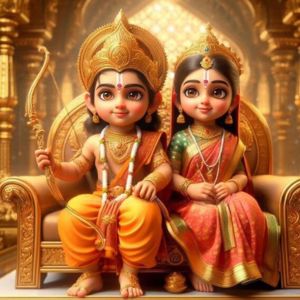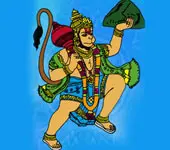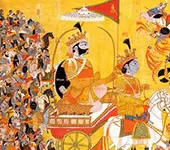This discourse tells you about- 1. The characteristics of the ocean 2. The fire in the ocean called Vadavanala.
Did Bhima train under Balarama?
After one year from the completion of the training from Dronacharya, Bhima again underwent training under Balarama in sword fight, mace fight and chariot fight.(Mahabharata.Adi Parva.138)
Quiz
Who is the Goddess of iquor?Transcript
(Click here to read more)
The Twenty-first chapter of the Astika Parva of Mahabharata is a description of samudra. The context is Kadru and Vinata set out to check whether the tail of the divine horse Ucchaisravas was black or white. Kadru said black. Vinata said white. If Kadru is right, Vinata will become her slave. If Vinata is right, then Kadru will become her slave. On the way, they see the ocean. Mahabharata uses this opportunity to reveal very many aspects of samudra, some that we already know and some that w....
Transcript
(Click here)
The Twenty-first chapter of the Astika Parva of Mahabharata is a description of samudra.
The context is Kadru and Vinata set out to check whether the tail of the divine horse Ucchaisravas was black or white.
Kadru said black.
Vinata said white.
If Kadru is right, Vinata will become her slave.
If Vinata is right, then Kadru will become her slave.
On the way, they see the ocean.
Mahabharata uses this opportunity to reveal very many aspects of samudra, some that we already know and some that we don't know.
The sea water or water of the ocean is inhabited by a huge number of different different aquatic animals.
The word for whale in sanskrit is तिमिङ्गिलः.
तिमिं गिलतीति तिमिंगिलः
Timi is a huge fish, that which can swallow a Timi is Timingila.
Samudra is सरितां पतिः.- the Lord of the rivers.
Samudra is the abode of Varunadeva.
Treasure of invaluable gemstones.
There is a fire in samudra called Vadavanala or Badavanala.
The legend of the birth of this Agni is very interesting.
There was a Muni called Urva.
He wanted to have a progeny.
But did not want to get married.
So he rubbed his thigh with a blade of darbha grass.
From friction, a fire was born.
Since he was born from Urva, since he was Urva's son, Vadavanala is also called Ourva.
As soon as he was born, he flared up and became huge in size.
He said: I am hungry.
And started devouring everything in three worlds.
Brahmadeva appeared.
You can't leave it like that.
We need to fix him a place and his food.
Or he will finish the three worlds.
Accordingly, the place for this Agni was fixed, the ocean.
What is behind the name Vadavanala?
Vadava or Badava is horse of the sea, the Seahorse.
Do you know about the peculiar eating habit of Seahorses?
They are very slow to consume food.
Just like fire and they have to constantly eat to stay alive.
Just like fire.
Fire, if you stop supply of fuel, soon it will extinguish.
That's why it is said that the place of this fire is in the mouth of the Seahorse.
And the food of Vadavanala is water itself.
This is at an esoteric level.
The world is of the nature of agnishomeeya.
A consumer and a consumed, always.
Agni is the consumer and Soma is what is consumed.
Yajna is symbolic of this.
Agni as a consumer; the offerings Soma, the consumed, and a result coming out of it.
Here for Vadavagni, the offering is water itself.
The ahutis are water itself.
Constant ahutis of water.
So that his huge hunger is satisfied.
The source of all water is the ocean.
It is the Sea water only that evaporates and feeds rivers, lakes and other water bodies.
Mahabharata calls samudra- वेलादोलानिलचलं क्षोभोद्वेगसमुच्छ्रितं -waves in the sea are caused by wind.
And also mentions about the phenomenon of tides following the waxing and waning of the moon.
चन्द्र वृद्धिक्षयवशात् उद्वृत्तोर्मिसमाकुलम्
Sea water is dirty.
When Bhagavan Varaha went inside and retrieved Earth from the bottom of the ocean, the turbulence that this caused turned the ocean water unclean, which it still is.
Mahabharata calls the ocean Asuranam-bandhu, well wisher of Asuras.
Varuna is the Lord of the ocean.
There is a special relationship between Varuna and Asuras.
Asuras were originally Varuna worshipers.
Rather than following the supremacy of Indra, Asuras became the worshipers of Varuna.
Even later whenever they were defeated,they took refuge in the ocean- डिम्बाहवार्दितानां च असुराणां परायणम्
Once, Atri Maharshi went looking for the bottom of the ocean.
He kept on searching for years.
But still couldn't find it.
He went to Pathala and found that there was ocean even below Pathala.
Do you know what this means?
What is Pathala?
Pathala is Southern Africa and the Americas.
Even they are as if they are floating on the surface of ocean.
Even they are islands.
Originally mountains had wings.
They would fly here and there and land on the surface of earth abruptly thereby crushing everything underneath.
Indradeva went about clipping their wings.
And among them, Mainaka Parvata took shelter in the ocean.
Ocean kept Mainaka hidden and safe.
It was on top of this Mainaka that Hanumanji rested for a while when he was crossing the ocean through the sky.
Recommended for you
The Power of Rudraksha

Learn about the origin of Rudraksha, its power, benefit, and what to avoid while wearing Rudraksha....
Click here to know more..Seetharama Mantra for wealth and protection

om kleem shreem shreem raam raamaaya namah' shreem seetaayai svaahaa raam shreem shreem kleem om....
Click here to know more..Hanuman Bahuk

sindhu tarana, siya-socha harana, rabi baala barana tanu . bhuja bisaala, moorati karaala kaalahu ko kaala janu .. gahana-dahana-niradahana lanka nih'....
Click here to know more..
English Topics
Mahabharatam
Click on any topic to open
- 95 What is behind Calling the Five Brothers the Pandavas
- 94 Give up an Individual IF....
- 93 Fascinating Birth Story of the Kauravas
- 92 Overcoming Grief - Lessons from King Senajit's story
- 91 Yayati's Wisdom
- 90 Yayati's Story
- 89 Brahmacharis Can Bless And Curse
- 88 Human Nature - Comples Mix Of Good And Bad
- 87 Results Of Good Karma
- 86 What Gives Results - Luck or Effort?
Please wait while the audio list loads..
30
Ganapathy
Shiva
Hanuman
Devi
Vishnu Sahasranama
Mahabharatam
Practical Wisdom
Yoga Vasishta
Vedas
Rituals
Rare Topics
Devi Mahatmyam
Glory of Venkatesha
Shani Mahatmya
Story of Sri Yantra
Rudram Explained
Atharva Sheersha
Sri Suktam
Kathopanishad
Ramayana
Mystique
Mantra Shastra
Bharat Matha
Bhagavatam
Astrology
Temples
Spiritual books
Purana Stories
Festivals
Sages and Saints
